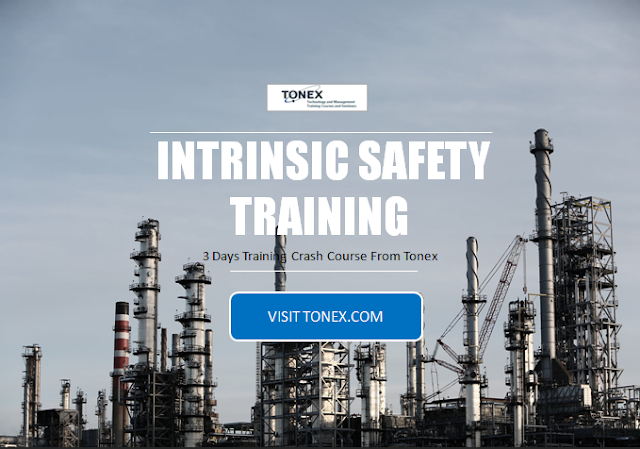Intrinsic Safety Training is a 3 day course is designed for engineers and non-engineers who are working with intrinsically safe equipment or anyone else who is interested to gain knowledge of Intrinsic Safety subject and skills on new methods of achieving safety.
Intrinsic Safety Training by TONEX covers all aspects of Intrinsic safety principals and prevention techniques and methods to avoid and prevent explosions from occurring. Learn about Intrinsic Safety ATEX Directives, IECEx, NEX,CSA, MSHA and OSHA guidelines and how to ensure that the energy transferred to a hazardous area and location is controlled and is well below the levels to trigger an explosion.
Intrinsically Safe (I.S.) is usually used as a term to describe products destined for a possible explosive area. “Intrinsically Safe” (IS) and Nonincendive are also referring to protection levels for safe operation of electronic equipment in various explosive atmospheres.
Why use TONEX for intrinsic safety training?
Intrinsic Safety Training course is designed to teach you how to plan, analyze, design, test, verify & validate, and document effectively, and get ready certification.
Intrinsic safety is considered as a requirement that may be applicable to devices that are being operated in areas with flammable gases or fuels. An intrinsically safe piece of equipment won’t ignite flammable gases.
Learning Objectives:
Upon completion of this course, the attendees will be able to:
Concisely define what Intrinsic Safety is
List basic hazards associated with the use of electricity near flammable gases, vapors and dusts
Explain the value proposition behind protection techniques
Discuss the merits and downsides of Intrinsic Safety
Discuss the business & technical considerations for Intrinsic Safety including savings & reliability.
List legal requirements and recommendations of the various Codes of Practice in relation to gases and dusts
Describe Intrinsic Safety and where it fits in control safety and design techniques applied to various industries
Discuss the basic guidelines for installation and maintenance in hazardous locations
List the principles of how the degree of hazard can be assessed by the classification of hazardous areas
Explain what types of apparatus may be used in particular locations
Describe Safety Integrity Levels (SIL)
More
Target Audience: This course is intended for those interested in theory behind Intrinsic Safety, hazardous area protection methods and techniques.
Course Agenda:
What is Intrinsic Safety?
Classification by Classes, Divisions and Groups
Electricity as a Source of Ignition
Cables, Barriers and Earthlings
Introduction to Standards Technical Principles
Intrinsic Safety and Hazardous Areas
Intrinsic Safety Circuit Design
Intrinsic Safety Area Classification
Intrinsic Safety Categories
Intrinsic Safety Ex i Concept Principles
Device Group
Analysis of Instruments Commonly Found in Hazardous Areas
Quality Requirements for Intrinsic Safety
Intrinsic Safety Applied
Intrinsic Safety Approvals for Radio Communications Equipment
Intrinsic Safety Certification Process
Intrinsic safety is considered as a requirement that may be applicable to devices that are being operated in areas with flammable gases or fuels. An intrinsically safe piece of equipment won’t ignite flammable gases.
Request more information. Learn more about Intrinsic Safety Training Crash Course.
Visit Tonex link below
Intrinsic Safety Training Crash Course

Comments
Post a Comment